
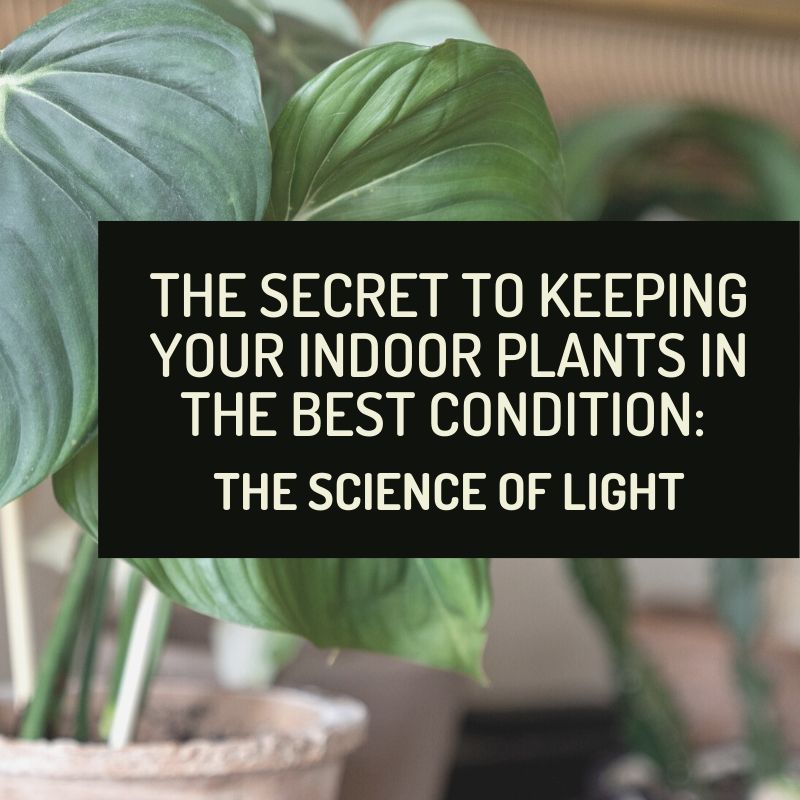
When did you buy your first potted plant?
Do you remember that very same day when you brought it home and placed it in an empty space that you wanted to fill to make it perfect? The magic of having a plant beautifying your house is something that we all experience… the first few days, or luckily, weeks.
Then, things start changing. The Dracaena looks dry and burnt, or the tiny pearl leaves of our string of pearls start falling, the plant turns into a sad being. And then we wondered what went wrong.
Then, we activate the “emergency protocol”: water the plant more frequently because “perhaps that will make the drooping branches perk up again”. Maybe change the spot and place the plant in brighter light. Later, we conclude that the plant needs full sun for a couple of hours a day. So, we take it out, and place it on the balcony or yard.
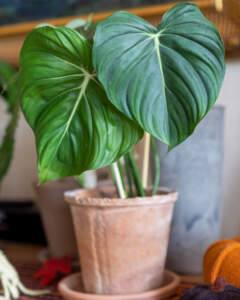
And finally, the excitement of buying a plant to decorate the house becomes a very disappointing experience.
So, what is the secret to success in indoor house plant keeping?
One word. Light.
It may sound simple, but your knowledge towards this vital factor is crucial.
The formula is L = F, Light = Food.
L = F is the first and main tip for any of your potted indoor plants to thrive. Light for plants is a priority.
Setting the right expectations
When you buy a plant, you need to understand that it is coming from plant paradise: a nursery. Plants receive 12 h of bright indirect light (or direct light, depending on the plant’s needs), a regular watering schedule, fertilizers, etc.
Once you bring the plant home and you take her out of this idyllic environment, it goes into “plant shock” and as a natural consequence, the plant experiences leaf yellowing and ultimately, loss of leaves.
A way to make this experience less extreme, is to allow you plant to slowly adapt to its new conditions, by putting it as close as possible to a window when you first bring it into your home, and slowly get it closer to the definitive location you have chosen for it.
Don’t set yourself up for disappointment and bring your plant home understanding that it will inevitably undergo changes as it gets used to the conditions you are able to provide.
Finding the right location for your plant.
It is not just about filling an empty corner with a beautiful plant.
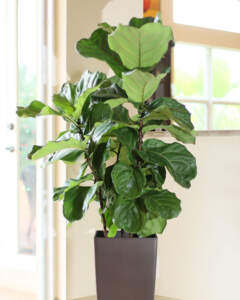
It is about understanding the plant’s needs. If you have bought a plant that is tolerant to low light, you may not need to worry too much about it. But some plants require plenty of light to survive and grow. L = F, remember?
Let us give you examples. Let’s say you get a Ficus lyrata and place it against a wall, in between two large windows in a large, bright room. But against that wall it has virtually no view of the sky. Inevitably, it will start losing leaves and potentially going downhill. You recognize the problem and move it against one of those windows instead. After a few days or weeks, your Ficus lyrata (Fiddle leaf fig) will stop losing leaves and start generating new growth. Now, let’s say you have a Ficus benjamina. And you place it in the same large room, facing a window but across the room. Even though it appears to receive plenty of light, it starts to shed an incredible amount of leaves. Alarmed by the leaf loss, you move it outside, where it gets full and beautiful again.
So, does that mean that we need to have a backyard or balcony available for our plant’s survival? No. It means that we need to understand that even by placing the plant a few feet away from a window, its potential for survival and growth might be hindered severely. It may also just mean that they will be thinner, leggier and overall less full than a plant much closer to a light source.
Action Plan
So, how to overcome light issues? Let’s explore the following questions:
1. What is the intensity of light that your plants are receiving?
- Minimum for survival
- Good for growth
- Maximum light for growth
Going back to the examples of the Ficus lyrata and Ficus benjamina, it is about finding balance. Finding the spot in which the plant is able to survive and generate new growth, while still looking beautiful and filling the spaces you had planned, even if it doesn’t look exactly like it did when you first bought it. You can also find a plant that will tolerate a low light environment, if you’re set in the location you want to place it at.
2. How long are your indoor plants exposed to this intensity of light?
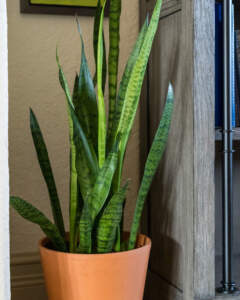
This is particularly important during cloudy days or winter months, in which days are shorter. Some ways to help you plants during these situations are by getting them closer to a window or taking them outside on cloudy days or using grow lights during the winter.
3. How are they exposed to that light?
- Through a shade cloth?
- Through a window facing North? South?
- Through clear or frosted glass?
This point tries to illustrate that you won’t get the same amount of light if you have shades or a curtain in between, or if you have a large window in a bathroom but the glass is frosted. These obstacles will affect significantly the amount of light the plant will receive for photosynthesis. Open up curtains or shades during the day and try to only use plants tolerant to low light in bathrooms or rooms with small or frosted windows. You can also again use grow lights to supplement your plant’s needs.
Regarding the position of the windows, your plant would receive bright sun all day at south-facing windows while north-facing windows are mostly suitable for plants that tolerate low light. Plants with medium light requirements may be placed on east and west-facing windows. The knowledge of this point may help you place your plants effectively. Also think about using plant stands, shelves and tables to get your small plants closer to the light source.
4. Have you noticed considerable changes in your plant’s shape in the different seasons?
As you get to know your plants, you may start to understand their cycles of growth. You expect great things in the spring and summer, as you also expect them to stop growing or flowering in the cold months. This is the natural response of the plants to weather, light and levels of humidity throughout the year and you can help them by using grow lights and humidifiers.
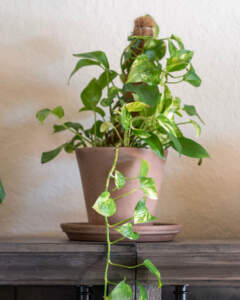
Once you start analyzing the place where your plant is located and peruse the angle in which it gets the light, plus the variations in terms of intensity -among other issues- you will start to understand how these factors clearly alter the plant’s well-being.
In your action plan, it’s a good idea that the first activity requires your careful analysis of location, amount of light, obstacles of your plant. In other words, become an expert in measuring light. Pay close attention to how many hours a day they are receiving that essential resource.
The second thing you can do is keep a close record of the status of your indoor plants. If you have one, there’s no need to write it down, just use your memory. But if you have accumulated a sizable collection of plants, then keep your notebook handy.
Lastly: be patient! Changes don’t happen from one day to the next. Use your notebook as a log and look for variations in your plants. Do it for around a week or so before making any modifications.
Note that so far, we are only changing this one variable. We will later talk about water, and about creating a watering schedule for your different plant needs.
So, with all of this in mind, we want you to try out a new strategy in order to take care of your plants. You will start noticing how they transform under your very own eyes. Are you ready?


